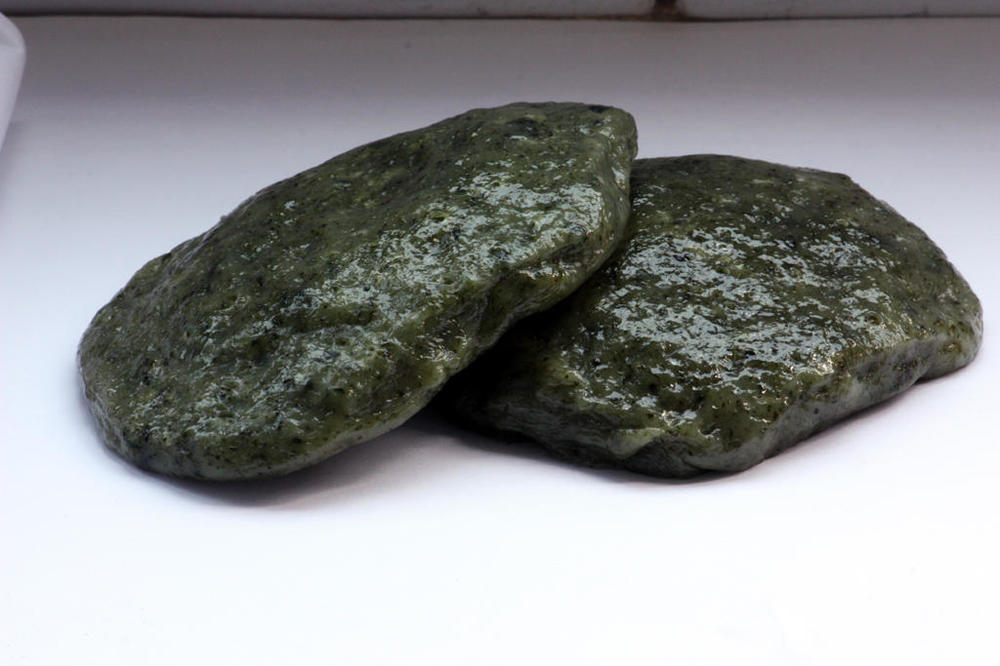It's a bit late in the season, but I saw this today. Artemisia vulgaris. 艾草 (Mand: ài cǎo; Cant: ngaai6 cou2)
Mugwort or Common Wormwood
This is used extensively in Traditional Chinese Medicine (TCM), where it is usually identified as Artemisia argyi.
It is used as yet another green to be stir-fried and is also used in "teas", but the most common usage round here are these little cakes which turn up in mid- to late-summer. Called 艾叶粑 (Mand: ài yè bā) or "mugwort leaf cakes" in the local dialect of Mandarin, they are made from a mixture of mugwort, which supplies the colour and flavour, and rice flour which supplies the bulk. The manufacturing process is complicated but involves washing then boiling the mugwort leaves. These are processed with lye to remove bitterness and soften them. Then they are sweetened with sugar and mixed with a 50-50 mixture of rice flour and sticky rice flour to make a dough. The dough is formed into little cakes two to three inches in diameter, then steamed for around 30 minutes.
They are nearly always sold as street food, although I have come across a couple of noodle places which have them. Despite their visual resemblance to miniature versions of something a passing cow might have left behind, they taste pleasantly vegetal or herbal but are very sticky. Not for the loose of tooth.
The plant is also used to make mosquito repellent incense sticks and in foot baths; not at the same time.




